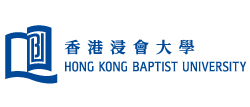A Novel Total Water Management System for Energy Saving and Resource Recovery in Coastal Cities
Abstract:
Potable water and wastewater treatment are traditionally based on fresh water supplies. Considering that only a small fraction of drinking water is actually used for consumption and that saline water can also be used to flush waste (sanitation) out of a city, we strongly believe that saline and brackish water can be considered as an alternative to seawater desalination in water scarce coastal cities. Hong Kong has been successfully practicing seawater toilet flushing for 50 years, which services 80% of the total population and saves 750,000 m3/day. Seawater toilet flushing has been recognized by International Water Association the most economic option for saving water resource in terms of capital investment, life-cycle unit cost and energy consumption as compared with traditional water reclamation relying upon seawater desalination and wastewater effluent reuse.
Saline sewage resulted from saline water supply suits a Sulfate reduction Autotrophic denitrification Nitrification Integrated (SANI®) process which reduces 90% of combustible sludge as compared with freshwater-based biological wastewater treatment processes. This novel technology was developed by HKUST in partnership of Delft University of Technology, The Netherlands. Seawater toilet flushing combining SANI technology offers an energy-saving alternative to traditional water reclamation as well as a low carbon emission sewage treatment for water scarce coastal cities. Integration of dual water with grey water (Triple Water System, TWS) reuse has been demonstrated at the Hong Kong International Airport, saving up to 52% of freshwater with an investment return within 7 years. Seawater supplies also provide an economic option to recover phosphorus (diminishing in 50-100 years) from source-separated urine (seawater-UPR® system) within 15 minutes without dosing any chemicals. This seminar will report the research work on these three aspects.
GH Chen obtained his PhD degree in Environmental Engineering from Kyoto University in 1990. He joined the Hong Kong University of Science & Technology (HKUST) in 1995. His major research interests include energy-saving sewage treatment, sewer biofilm modeling, urine separation and phosphorus recovery and non-fouling membrane bioreactor. Over the past 10 years, he and his research team have developed about 12 patented wastewater treatment processes: SANI, SIM-SANI, HO-SANI, G-SANI, Bio-P SANI, FGD-SANI, non-fouling MBR, MEPT process, MOST process, urine-nitrifying biomass granulation, seawater-UPR, and in-sewer denitrification process. Most of them have been pilot-scale or full-scale trialed. He holds 17 patents He is currently Associate Editor of Water Research, served guest editor of Water Science & Technology four times GH delivered more than 14 keynote/invited speeches at various international conferences including IWA LET2010 in Arizona and more than 7 guest lectures at various overseas institutions including UNESCO-IHE, The University of Tokyo, Nangyang Technological University, and Hokkaido University. He has recently been elected Fellow of IWA and nominated for Technology Academy Finland’s Millennium Technology Prize 2012 (the world’s largest technology prize) by the President of HKUST.
Time: 5:00p.m - 6:30p.m
Venue: Cha Chi-ming Science Tower SCT501, Ho Sin Hang Campus, Hong Kong Baptist University


